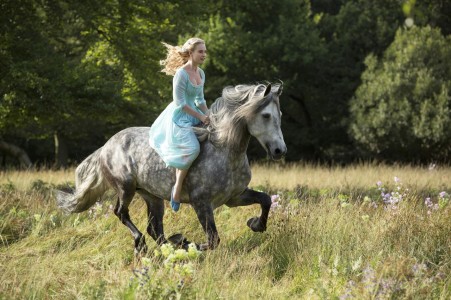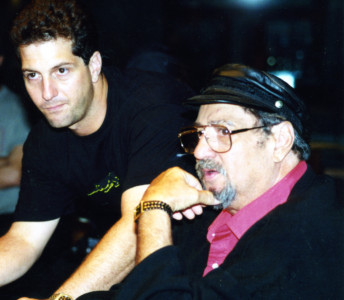Fri 13 Mar 2015
Tale As Old as Time
Posted by admin under Film Review
Comments Off on Tale As Old as Time
Reviews of a live-action Cinderella and a son’s love letter to his father and the other members of The Wrecking Crew.
For a movie that has no reason to exist beyond maximizing Disney’s back catalogue, Kenneth Branagh’s live action Cinderella is an entirely enjoyable piece of fairy tale theater. The sets and costumes are appropriately sumptuous, the actors inhabit their roles with just the right amount of seriousness and self-deprecation and the tone is gentle enough for kids, while still touching on the darker, grown-up themes and ideas that are intended to be part of these fables, but can all too easily be leeched out by nervous storytellers. Branagh has a checkered career as a filmmaker, with sparkling Shakespeare adaptations like Henry V and Much Ado About Nothing resting alongside stolid big-budget movies like Mary Shelly’s Frankenstein and Thor, but he demonstrates a firm understanding of his task with Cinderella. This version isn’t intended to supplant the Mouse House’s 1950 animated classic, which remains one of the crown jewels in their extensive line-up of princess movies. Rather, it’s meant to provide a fuller account of the source material, beefing up the original’s 75 minute runtime to 112 minutes and fleshing out the universe and its characters in the process.
I’d actually argue that 112 minutes is pushing it; 95 minutes would have been right in the zone, allowing enough room for some of Branagh and screenwriter Chris Weitz’s smarter flourishes, while also forcing them to eliminate the additions that just drag the narrative down. The latter elements include a pointless subplot involving Stellan Skarsgard as a duplicitous advisor to Prince Charming (Richard Madden) and his father, the King (Derek Jacobi), a superfluous first-act meet cute between the heroine (Lily James) and her prince that robs their encounter at the royal ball of some of its magic and a moment where the mother of all wicked stepmothers (played here by Cate Blanchett) monologues about the reasons behind her wickedness.
On the other hand, I appreciate the embellishments Weitz and Branagh imbue in the first act, lengthening the introduction to Ella’s idyllic childhood and then allowing them to experience the trauma of having that part of her life progressively ripped away through death and neglect until she’s left as Cinderella. (I even forgive the movie its Batman Begins moment where we learn the exact origin of her name.) And under their hand, Prince Charming becomes more than just a cardboard cut-out of blandly handsome royalty—he’s got flashes of real personality, expressing doubts about his impending move to the throne and displaying a progressive attitude towards the kingdom’s less-fortunate subjects. The driving metaphor of this Cinderella is that great things can be born out of great tragedy (in this case, the death or impending death of parents and/or spouses) if one manages to remain resilient and good at heart. Both Cinderella and the Prince hang onto their decency in the face of adversity, whereas the wicked stepmother allows her sadness to curdle into cruelty.
Perhaps because of his theatrical background, Branagh is more comfortable shooting the action on physical sets with actual props. Whenever CGI enters the frame, it looks distinctly out of place, too cartoonish for the grounded fantasy world the movie is otherwise striving to create. (That problem marred Thor as well.) Which leads to another bit of business that could have been cut or severely trimmed back: the computer-animated mice and assorted critters that skitter throughout the movie. These characters are remnants of the cartoon—where they had actual dialogue, a choice that Branagh wisely opts against repeating—as well as Disney’s decades-long tradition of cute animal sidekicks. Fortunately, the flesh-and-blood humans remain front and center throughout and the cast more than holds your attention without the aid of digital trickery. James and Madden are a…well, charming pair of young lovers, while the members of Cinderella’s wicked stepfamily are hissable without being thoroughly hateful. I’d still recommend the streamlined cartoon version to parents of younger children (think 5 and under), but when those kids are ready for a fairy tale that’s a little bit more grown-up, it’s nice to know that this Cinderella is there waiting.
Part of a wave of recent documentaries that seek to honor the unsung musicians of yesteryear—think 20 Feet From Stardom, Muscle Shoals and Searching for Sugar Man—The Wrecking Crew has a personal angle that lends it added resonance. This portrait of the titular collective of session musicians that played on some of the biggest hits of the ‘50s, ‘60s and ‘70s was directed by Denny Tedesco, son of Wrecking Crew stalwart, Tommy Tedesco. The elder Tedesco passed away in 1997, but not before sitting down for several on-camera rap sessions with Denny, who spent the next decade recording interviews with other Wrecking Crew members, as well as major artists and music industry personalities like Cher, Nancy Sinatra and Dick Clark.
Tedesco completed The Wrecking Crew in 2008 and screened it at various festivals, but the costs of licensing the hit records heard throughout the film proved prohibitive for a wider release. But a successful Kickstarter fundraising campaign to cover those fees, combined with an Oscar victory for 20 Feet from Stardom, put Crew back in play as a viable candidate for a theatrical run. I have a feeling Tedesco’s movie won’t hit the same commercial heights as Stardom, which benefitted from its irresistible hook of moving the underdogs out of the background and into the spotlight. Also, fairly or not, the general public seems to value the primacy of singers over those who play the instruments that underscore their warbling. (Credit and/or blame the popularity of reality shows like American Idol and The Voice for that.) But I think it’s a slightly better movie, more focused in its narrative and benefitting from the director’s direct connection to the subject at hand.
Formally, the movie isn’t especially distinguished, as Tedesco goes for the standard rock doc juxtaposition of talking head interviews with period B-roll. But the musicians’ memories, coupled with the murderers’ row of killer tunes that play on the soundtrack, carry you along and recreate a period in the music industry that’s long since vanished. And if The Wrecking Crew is perhaps too reverential of that time and these artists—one of the risks of a son making a movie about his father—it at least encourages viewers to take a closer look at the liner notes of classic rock tunes and appreciate the time and skill that went into crafting them.



No Responses to “ Tale As Old as Time ”
Sorry, comments for this entry are closed at this time.